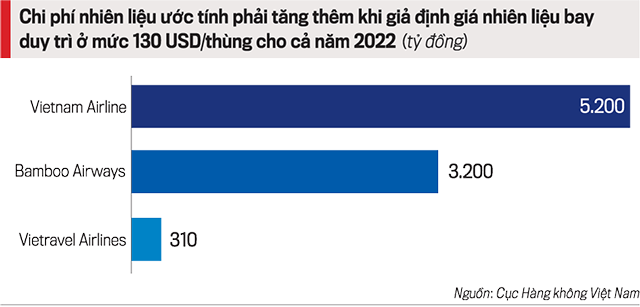[ad_1]
Road traffic is the most sensitive to gas price fluctuations. Speaking to a reporter from Vietnam Economic Review/VnEconomy, Mr. Nguyen Van Quyen, chairman of the Vietnam Automobile Transport Association, said that fuel costs typically account for the largest share of road transportation costs, up to 35-40%.
Due to the proportional increase in gasoline prices, there are times when fuel costs account for a very high proportion, up to 40-45% of road transport costs, the highest among modes of transport.
UNFORGETTABLE CHANGES, ROAD IS DIFFERENT
When the price of gasoline fluctuates unpredictably, increases or disrupts supply, it definitely impacts freight rates, thereby causing a disruption in the freight transportation chain. “Once higher freight rates also push up commodity prices, making it difficult to stabilize commodity prices in the market and becoming a big variable for the economy. On the contrary, low freight rates are a factor that makes prices more affordable,” Quyen said.
Noting that in 2022 the price of crude oil sometimes rose very sharply, making transport companies uncomfortable because the input cost structure was heavily dependent on gasoline, there were times when companies were also “kite snakes” waiting in line, to buy any product. liters of gasoline… when a number of gasoline and oil retail outlets closed and suspended operations in some provinces and cities.
Gasoline and oil shortages are also causing construction and transportation projects to stand still over fears of hampering project progress.
However, despite unusual fluctuations in fuel costs, road transport companies cannot immediately adjust freight rates because they need to recalculate price-forming factors, many units need to declare their prices to the Department of Transport or adjust the meter Re-list the price, change the old ticket is also expensive, but it is also difficult to keep up with the increase in gasoline.
Therefore, according to the chairman of the Automobile Transport Association, when studying freight rates, companies need to forecast gasoline and oil prices for a certain period of time and estimate the percentage of costs, thereby calculating transport methods within 3 to 6 months.

“Oil prices change once every 10 days, companies cannot calculate the freight rate plan for 10 days.
Because every time a passenger transport fee changes, the passenger transport company has to reprint the ticket along the fixed route and re-register the freight tariff with the Ministry of Finance. Taxi companies need to register when adjusting the meter to verify the price adjustment and pay the fee to the Center for Quality Measurement Standards,” Quyen said.
In addition, the cargo also needs to negotiate with the shippers to sign a term contract, so the units are also very limited in terms of changing cargo rates.
According to Mr. Quyen, calculations are being made actively, but when petrol prices fluctuate unpredictably, as they did last year, it is very difficult to forecast. Besides this, in addition to the impact of gasoline prices, transportation rates are also greatly affected by the law of supply and demand in the market, which is the most important factor.
Given the shortcomings of petroleum management over the past year, contributing to the amendment of Decree 95/2021/ND-CP of November 1, 2021 and Decree 83/2014/ND-CP of September 3, 2014 on the petroleum business, representing the voice of more than 1,000 member companies, chairman of the Vietnam Automobile Transport Association, hopes that gasoline prices will remain stable this year to allow transport companies to continue to recover, although this may be difficult as it depends heavily on the world situation.
However, it is necessary for the managing authority to act quickly to avoid the market becoming unstable or causing a shortage of gasoline and getting into trouble for the businesses.
Regarding the current picture of the road transport industry, a representative of the Automobile Transport Association said that companies have basically recovered, especially in the transport of goods, similar to before the epidemic. Passenger traffic alone recovered by around 60-70%, of which passenger traffic on fixed routes in particular fell sharply and only recovered by 50%.
“The hardest thing today in this type of business is being pressured by the competition and being pressured by disguised contract vehicles who take advantage of contract vehicles’ names to pick up passengers outside the station and form illegal venues…those with the You have to step onto the wharf, according to regulations,” Mr Quyen said. The problem of umbrellas and toads is still a problem, so the Automobile Transport Association will work with the ministries of transport, the Vietnamese Road Administration and the transport industry to discuss solutions to fully manage the situation.
ENJOY THE AIR GAIN
Fuel costs account for a very high proportion, up to 30-40% of the total flight costs of airlines, not only in the road transport industry. Results in 2022 show the aviation industry has made a strong recovery from the epidemic, but it’s been a sad fiscal year, especially for the two “big” airlines because the more they fly, the more they lose.
According to calculations by the Civil Aviation Administration of Vietnam, assuming that the kerosene price remains at USD 130/barrel for the whole of 2022, Vietnam Airlines’ estimated fuel costs must increase by VND 5,200 billion, Bamboo Airways will increase by about VND 3,200 billion and the equivalent figure from Vietravel Airlines is VND 310 billion.

Analysts are forecasting that fuel costs will remain about 20% higher in 2023 than pre-pandemic levels, while revenue from international visitors will slowly recover and the industry landscape will be fairly competitive during the reopening period, keeping airline profits low. .
The content of the article was published in Vietnam Economic Review No. 9-2023, issued on February 27, 2023. Welcome readers to read The:
https://postenp.phaha.vn/chi-tiet-toa-soan/tap-chi-king-te-viet-nam

[ad_2]
Source link

